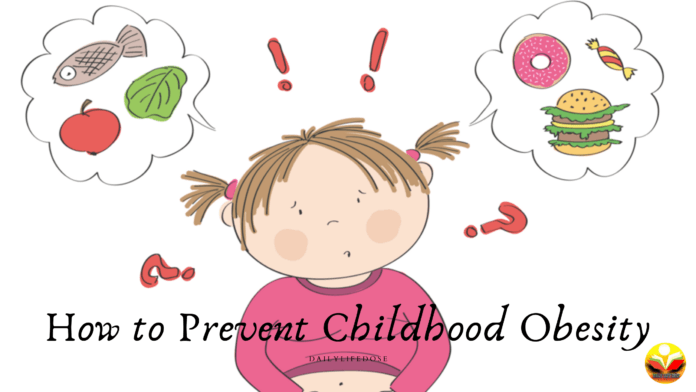Childhood obesity is an epidemic that we must control. The alternative is too grave to even think about. The health risks alone are enough to make you shudder. But the truth that hardly anyone ever talks about is that the resources of the planet are also limited.
But this blog is not going to talk about the planet and its limited resources. Instead, the focus is going to be the more short-term goals that can improve your child’s health. Because the bottom line is that an obese or overweight child is at greater risk.
Body Image Issue is Biggest Threat to Humanity
Some Obesity Statistics That Every Care Taker Should Know
The first thing you should get clear is that obesity is not a ‘growing cause for concern’. It is in fact and full-blown epidemic. All over the world, but more so in the US.
Child Obesity Around the World:
- As of 2016, there were 41 million obese children under the age of 5
- Given the current trend, by 2025 the number of obese infants and children will be 70 million
- Rate of increase in child obesity is more than 30 percent higher in developing countries
- As of 2016, in WHO African region, 9 million children suffer from childhood obesity
Child Obesity in the US:
- As of 2016 there were 13.1 million obese children and adolescents in the US alone
- There is a 13.9 percent growth in obesity of children below the age of 5
- There is a 39 percent growth in obesity of children between the ages of 6 and 19
- Hispanics, non-Hispanic whites, and non-Hispanic blacks are more likely to suffer from childhood obesity
The Main Causes of Childhood Obesity
There are many factors that can lead to childhood obesity. Some of the most common ones are:
- Gestational Diabetes During Pregnancy
Gestational Diabetes is a form of diabetes that can occur during pregnancy. It can result in increased birth weight of your child. It is also a cause of higher obesity onset risks in the future.
Are you aware of it if you are a Pregnant women?
- Starting Formula and Baby Food Early
Studies conclusively prove that infants introduced to formula and baby food early are at higher risk. Try to keep your infants away from these foods for the first 6-9 months. That will help lower the risk of childhood obesity later in life. Instead of those try to give your child natural nutrients and minerals.
- Early Establishment of Preferences
Infants are susceptible to early influences. So don’t give your infant foods that are high in fat, sugar, or salt, early in life. They are more likely to develop a taste for them as they grow older. That can lead to poor eating habits. And therefore higher risk of childhood obesity.
- Lack of Information
The most important cause of childhood obesity is a lack of nutritional information. Most parents and primary caregivers are unaware of the nutritional value of foods. So they are bound to give their children the wrong food groups. That can have serious health implications and affect growth. In addition to being the leading cause of childhood obesity. That’s why you should start gathering knowledge before having baby.
Some Ways to Prevent Childhood Obesity
When it comes to your children’s safety, there is nothing you wouldn’t try. These tips will allow your children to live a healthier and happier life. And stay safe from the health risks and diseases connected with obesity.
- Breast Feeding
- Limit Unhealthy Foods
- Increase Healthy Energy Intakes
- Increase Physical Activity
- Reduce Screen Times
#1. Breast Feeding
It is important to stick to breastfeeding your infants for at least the first six months. Up to a year or more, if you feel comfortable. Breast milk is enriched with nutrients that the infant’s body needs to develop. Switching to formula and baby foods can, amongst other things, lower metabolism. That leaves your child at a higher risk of obesity.
#2. Limit Unhealthy Foods
Most children today get used to eating junk food early in life. Chocolates, crisps, fried foods, sodas, and doughnuts are all fall under the unhealthy category. It is also important to note that most bottled juices are also high in sugar. So they are unhealthy as well.
#3. Increase Healthy Energy Intake
Substitute unhealthy foods with healthier ones. Instead of bottled fruit juices, offer fresh fruit juices, or whole fruits. Increase the intake of nuts and meats. Instead of french-fries as snacks, offer celery sticks. Developing these tastes early in life can stick with your child well into their adulthood because they are great source of natural nutrients and minerals.
#4. Encourage Physical Activity
Encouraging physical activity could just mean less time in front of the TV or mobile device. Your child doesn’t need to go out and play in the park. Although that is what is most recommended. But if you’re unable to then encouraging them to play with physical toys might be a start. Because we don’t realize how much mobile radiation is harmful to our kids.
Conclusion
Childhood obesity is a serious matter. To combat it you must control your child’s energy intake and increase their physical activity. A good way to promote physical activity is to control their TV time. My 7-year-old used to watch TV for hours. I had to use a parental lock on my Frontier bundles just for that purpose. And it worked. It encouraged him to play more and asa result, he lost weight and improved his social skills.













Thanks for given valuable information about Childhood Obesity. I learned a lot from your articles. And everyone should awareness to this. I truly prefer to visit here, Much obliged to you for sharing.
Thanks…